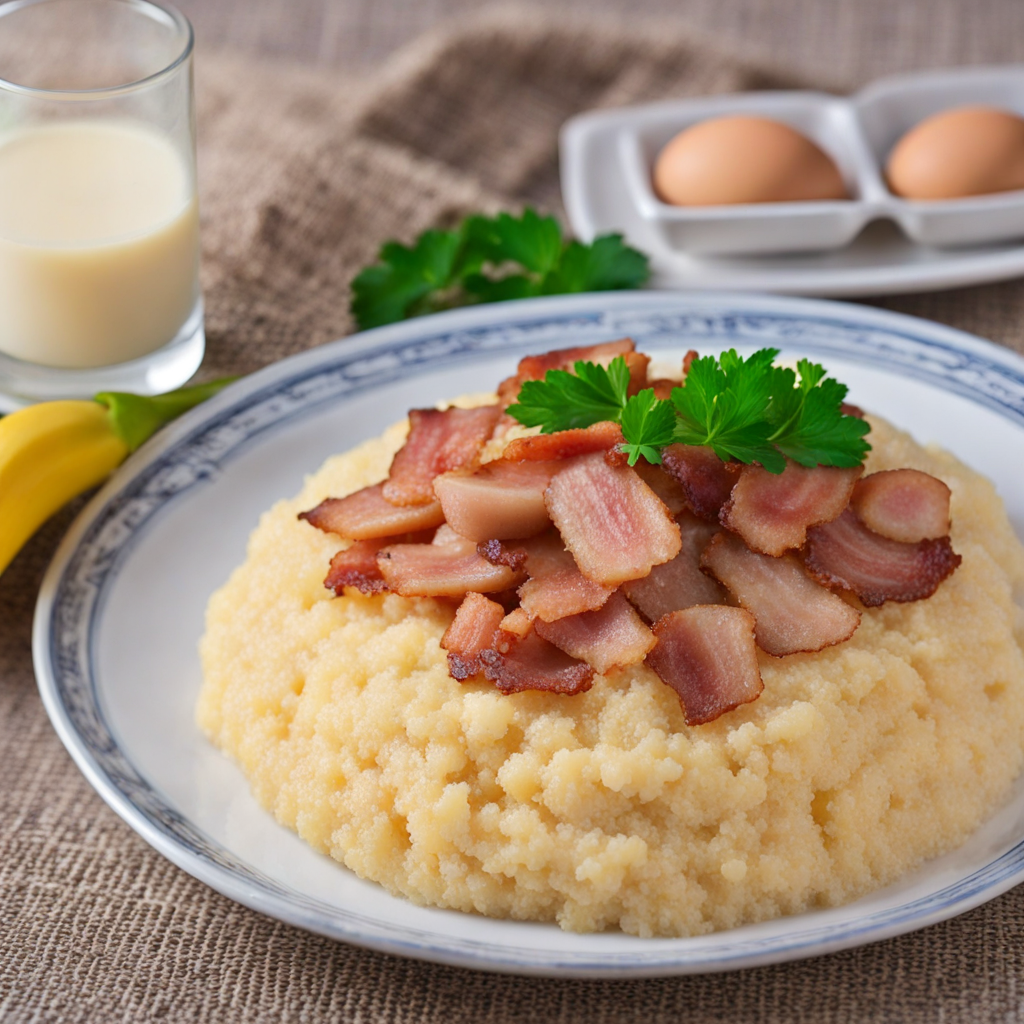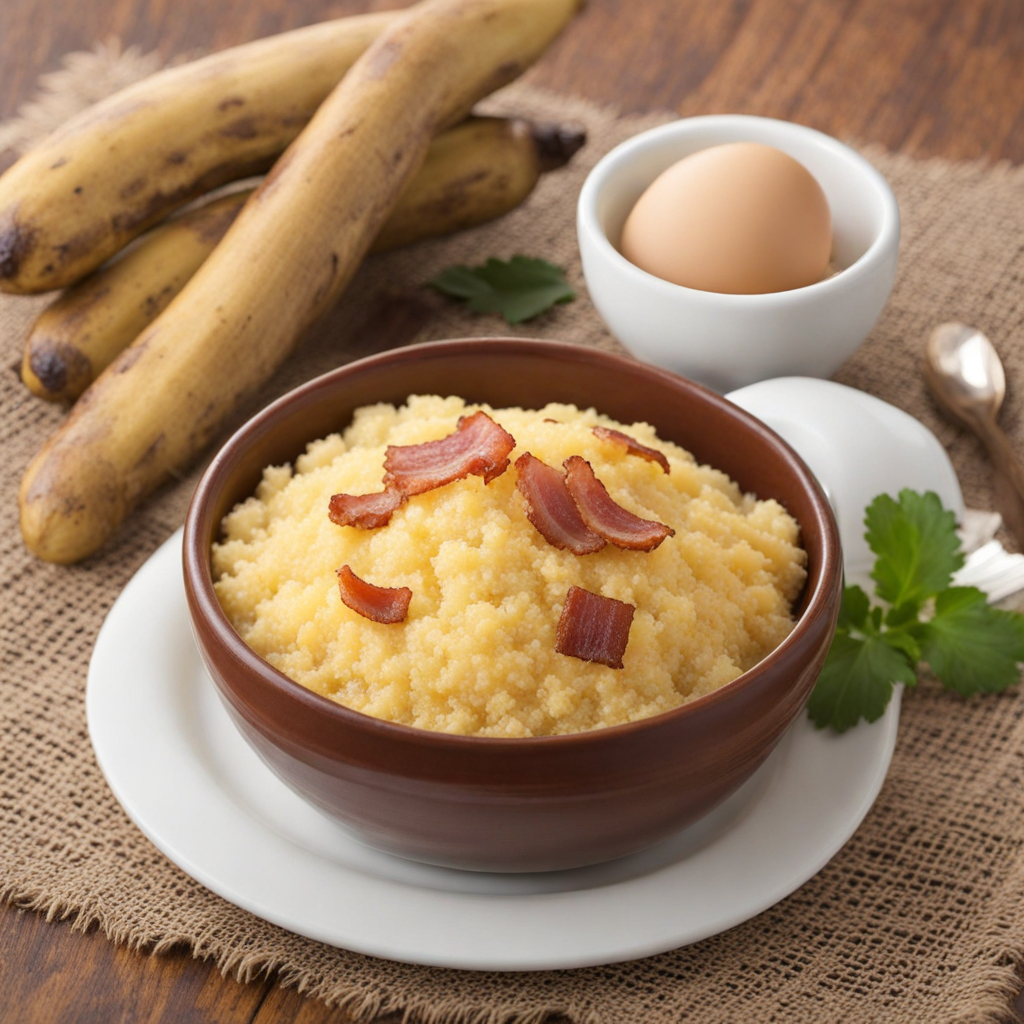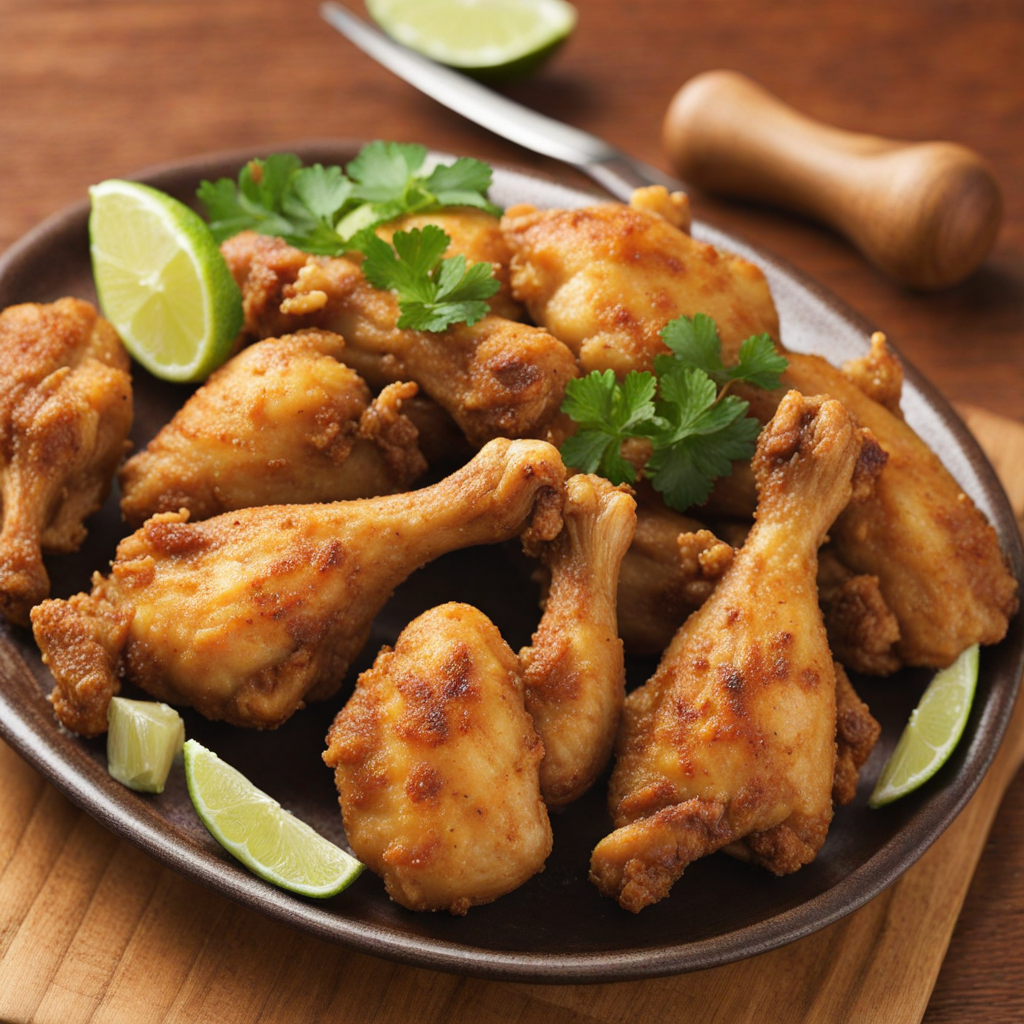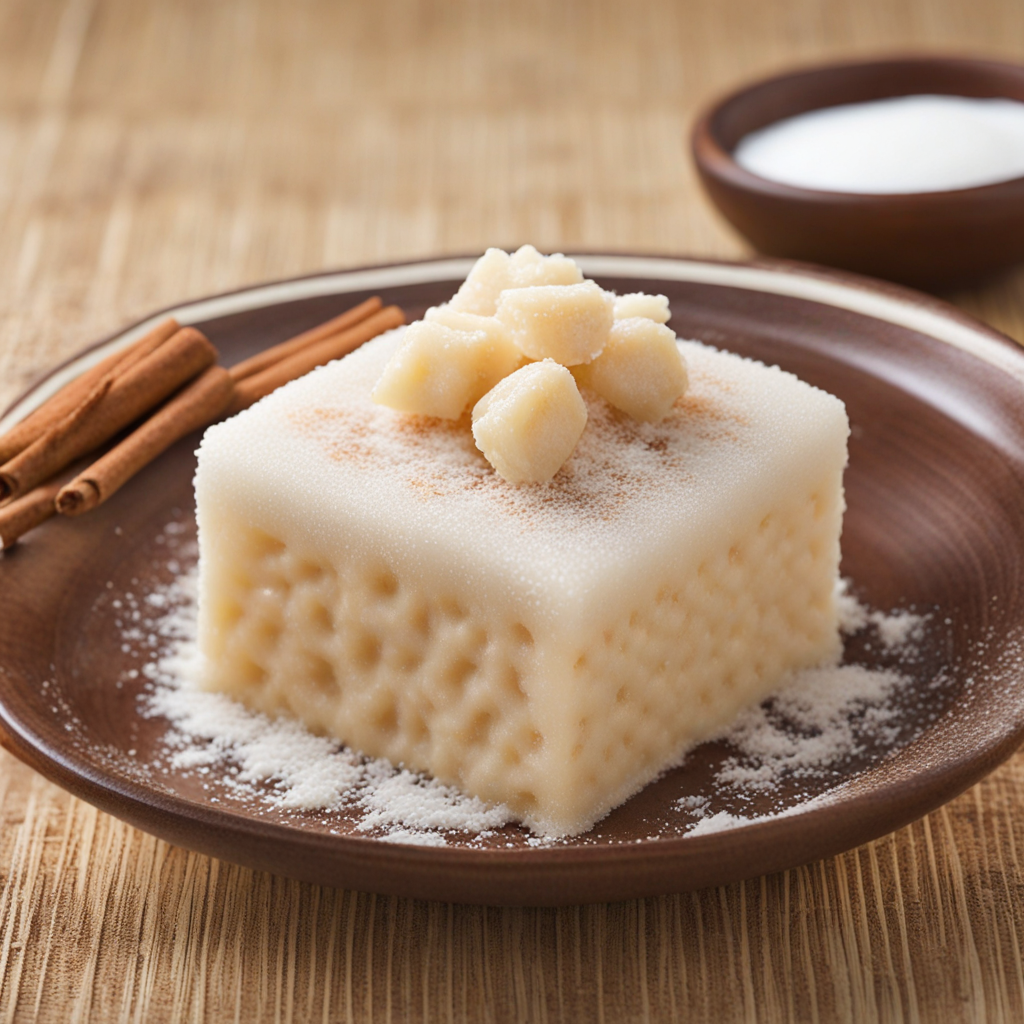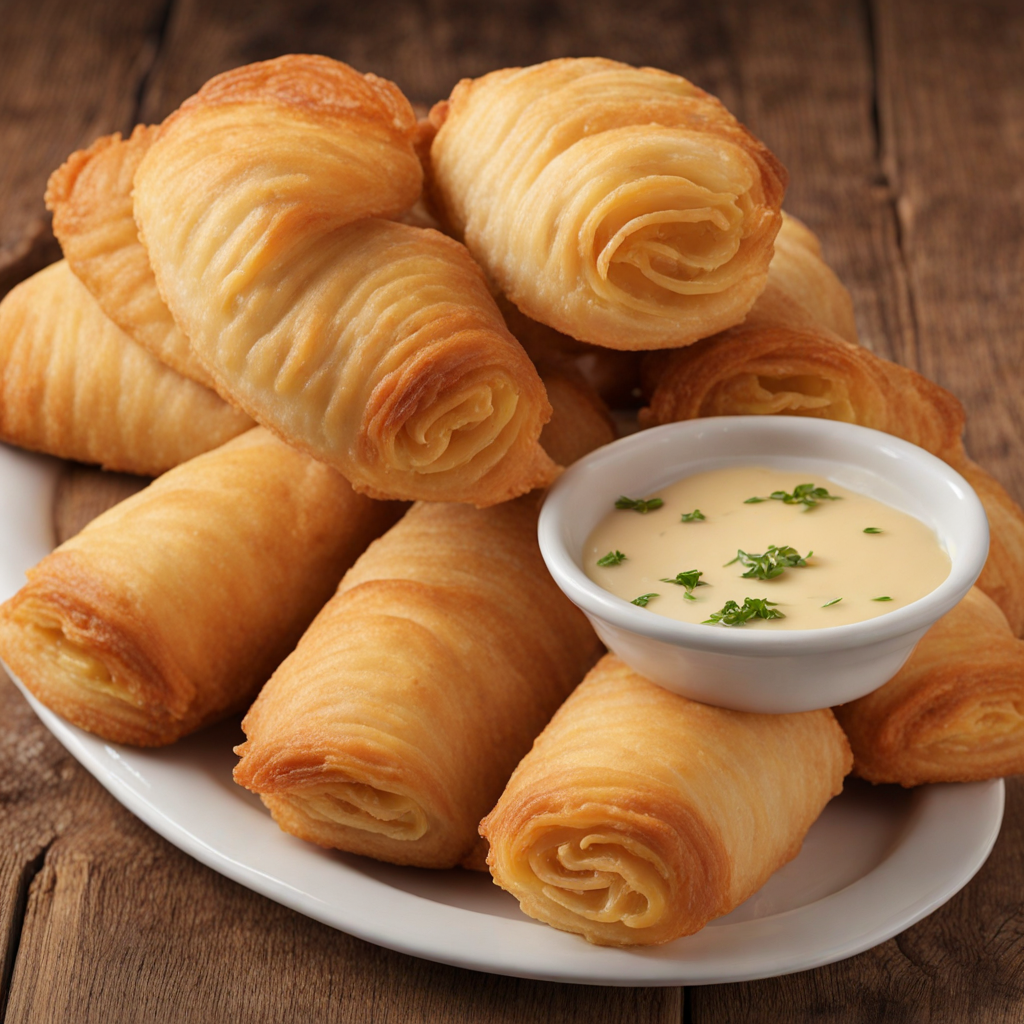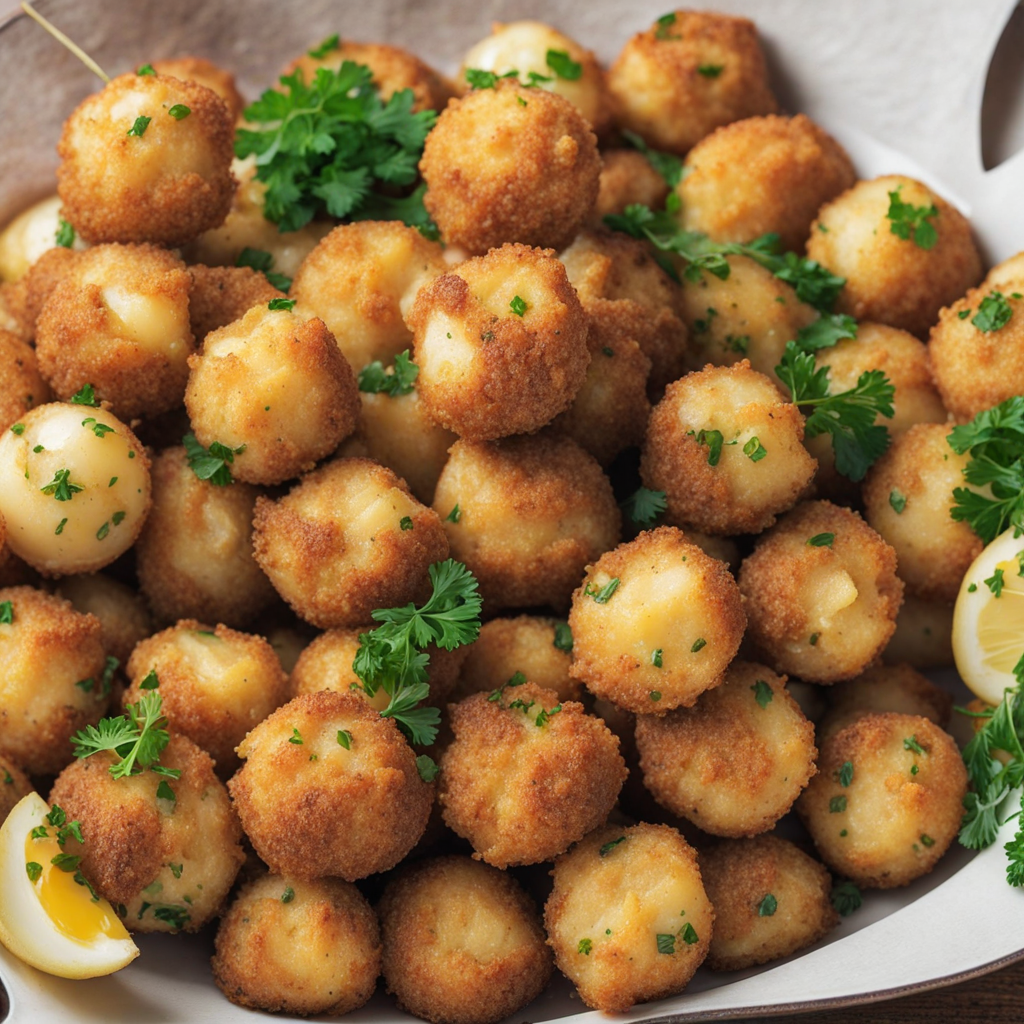Farofa
Farofa is a traditional Brazilian dish made primarily from toasted cassava flour, which brings a unique texture and flavor that is distinctly different from many other side dishes. The process of making farofa involves toasting the flour in butter or oil, which imparts a rich, nutty aroma and a delightful crunch. This staple is often customized with various ingredients, such as onions, garlic, bacon, and herbs, allowing for a wide range of flavors that can complement any meal. The result is a versatile dish that can either serve as a simple accompaniment or stand out as a flavorful component on its own. In many Brazilian households, farofa is a must-have during festive gatherings and barbecues, particularly when served alongside feijoada, a hearty black bean stew with meats. The dish adds a textural contrast to the soft, savory beans and meats, elevating the overall dining experience. Each bite offers a delightful crunch that balances the richness of the main dishes, making farofa a beloved choice among locals and visitors alike. The adaptability of farofa means that it can be made with various twists, such as incorporating vegetables, dried fruits, or even a sprinkle of cheese, catering to diverse palates. Farofa is not just about flavor; it also embodies the spirit of Brazilian cuisine, where simplicity and fresh ingredients come together to create delicious meals. Sharing farofa with friends and family during celebrations highlights its importance in Brazilian culture, as it symbolizes warmth and togetherness. Whether you're enjoying it at a casual barbecue or as part of a grand feast, farofa is sure to introduce you to the vibrant and rich culinary heritage of Brazil, leaving you eager to explore more flavors from this incredible country.
How It Became This Dish
Farofa: A Culinary Journey Through Brazil's History Farofa is a quintessential Brazilian dish that has transcended its humble origins to become a beloved staple on tables across the nation. Made primarily from toasted cassava flour, farofa serves as a versatile accompaniment to a variety of meals, most notably feijoada, Brazil’s iconic black bean stew. Its history is deeply intertwined with Brazil’s indigenous populations, colonial past, and the diverse cultural influences that have shaped the nation’s culinary landscape. Origins: Indigenous Roots The story of farofa begins long before the arrival of European settlers in Brazil. Indigenous peoples, particularly the Tupi-Guarani tribes, were the first to cultivate cassava (Manihot esculenta), a starchy root vegetable that was a staple of their diet. They developed methods to process cassava, including the extraction of toxic compounds through soaking, fermenting, or cooking, which made it safe to eat. The resulting flour, known as "farinha," was integral to their cuisine, often used as a thickener for soups or as a side dish. As Portuguese explorers arrived in Brazil in the 16th century, they encountered cassava and its flour. The adaptation of this indigenous food item marked the beginning of farofa’s evolution. The Portuguese settlers quickly recognized the value of cassava, incorporating it into their own diet. They introduced new cooking techniques and additional ingredients, such as onions, garlic, and spices, which would later define the modern farofa. Cultural Significance Farofa is more than just a side dish; it is a symbol of Brazilian identity and cultural heritage. Its ability to adapt and integrate various regional ingredients has allowed it to flourish in the diverse culinary landscape of Brazil. From the coastal regions to the Amazon rainforest, each area has its own unique take on farofa, reflecting local produce and traditions. For example, in the northeastern states of Brazil, farofa might be made with the addition of bacon, eggs, or even dried meat, emphasizing the region’s penchant for bold flavors. In the southern regions, farofa may incorporate chimichurri or fresh herbs, showcasing the influence of gaucho culture. The versatility of farofa has made it a beloved dish for both everyday meals and festive occasions. In Brazilian culture, farofa is often served during gatherings and celebrations, particularly during the Christmas season and family reunions. It is commonly paired with feijoada, a dish that itself is a product of the blending of African, Portuguese, and indigenous culinary traditions. The combination of farofa and feijoada exemplifies the harmonious coexistence of these cultures within Brazilian society. Development Over Time As Brazil evolved, so too did farofa. The dish has undergone a transformation from its indigenous roots to a national icon, reflecting the country’s complex history. The 19th century saw the rise of coffee plantations and the influx of immigrants from Europe and Asia, each bringing their own culinary practices. The introduction of new ingredients such as nuts, raisins, and even seafood has enriched the farofa repertoire. In the 20th century, farofa became increasingly popular in urban areas, particularly in São Paulo and Rio de Janeiro. The rise of the middle class and the growth of the food industry contributed to the dish's commercialization. Packaged farofa became available in supermarkets, allowing people to enjoy this traditional dish with ease. The convenience of pre-made farofa did not diminish the affection for homemade versions, as families continued to gather for communal meals where they would prepare farofa together. The late 20th and early 21st centuries brought a renewed interest in traditional Brazilian cuisine, bolstered by the global food movement that celebrated local and sustainable eating. Chefs began to experiment with farofa, incorporating unconventional ingredients such as truffles, cheese, and even exotic spices. This culinary creativity has elevated farofa to new heights, transforming it into a gourmet dish that can be found in upscale restaurants alongside traditional fare. Contemporary Farofa Today, farofa remains a staple in Brazilian households and restaurants alike. Its adaptability means it can be tailored to suit vegetarian, vegan, and gluten-free diets, making it relevant in an increasingly health-conscious society. Chefs and home cooks alike are exploring innovative variations, such as farofa made with quinoa or incorporating seasonal vegetables. Despite the modern twists, the essence of farofa remains intact. It embodies a sense of nostalgia for many Brazilians, evoking memories of family gatherings and shared meals. It is a dish that speaks to the heart of Brazilian culture—a blend of influences that honors the past while embracing the present. Conclusion Farofa is more than just a dish; it is a reflection of Brazil's rich history and cultural diversity. From its indigenous roots to its modern interpretations, farofa tells a story of resilience and adaptation. As it continues to evolve, farofa stands as a testament to the enduring legacy of Brazil’s culinary traditions, a dish that unites people across regions and generations. In the global culinary scene, farofa is slowly gaining recognition, with food enthusiasts and chefs exploring its potential beyond Brazil. As it makes its way onto international menus, farofa holds the promise of introducing new audiences to the flavors and stories of Brazilian cuisine. In every sprinkle of farofa, one can taste the history, culture, and unity that define Brazil, making it a truly remarkable dish worth celebrating.
You may like
Discover local flavors from Brazil


